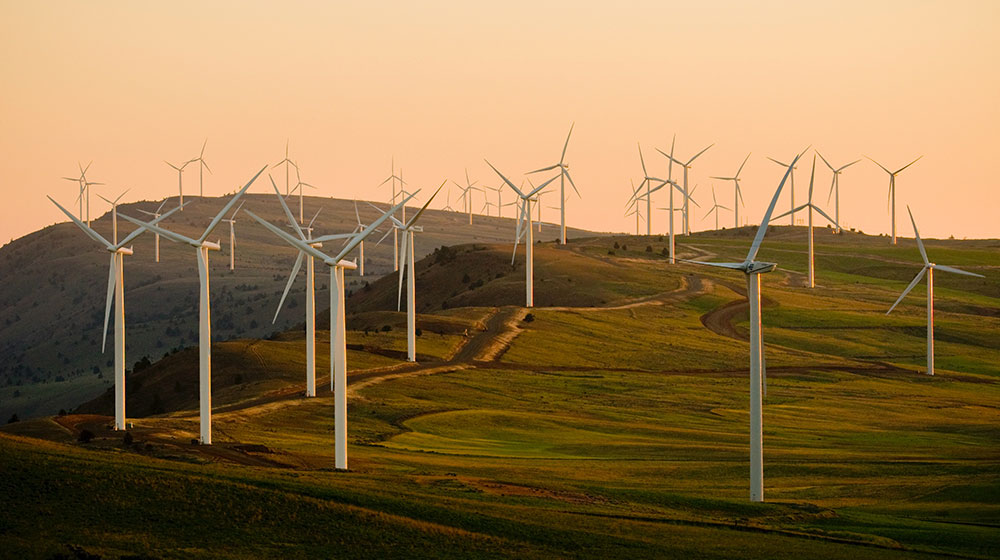The pros and cons of investing in renewable energy supply chains.

The winds are changing
Today, renewable energy generates 26% of the world’s electricity. By 2024, it is expected to generate 30%. This upward trend is one that businesses should pay attention to if they hope to remain competitive and successful, especially when it comes to investing in renewable energy supply chains.
Domestically, one of the fastest growing markets for renewable energy is wind. Wind energy involves numerous supply chain elements—ranging from wind turbine generator development to wind turbine transportation—that offer unique opportunities for both businesses and the economy. In the next decade, the offshore wind energy market is expected to grow into an industry worth nearly $60 billion in capital expenditures. Such growth, driven by the availability of natural resource lease opportunities and an increased demand for clean energy, will open the door for true economic and humanitarian potential. Experts predict that switching to renewable energy could save 4 to 7 million lives each year from air pollution, while simultaneously functioning to slow and reverse the effects of global warming, stabilizing the energy sector.
More than just altruism
We know what you’re thinking. Renewable energy supply chains are Earth-friendly and make for a good public image, but are they cost effective? The question is valid. Research and technology for renewables is often costly and can take time to develop. However, the U.S. Department of Energy continues to fund cutting-edge research to produce the next generation of renewable technology. The average installation cost of a wind project is down 40% from 2010 and is continuing to drop. Moreover, the American Wind Energy Association (AWEA) forecasts that the offshore wind industry alone will invest between $28 and $57 billion in the U.S. economy. As of 2018, the wind sector of renewable energy is responsible for employing over 100,000 people and generating over $1 billion in revenue. The money is there to be made, especially as costs continue to fall and environmental concerns continue to rise.
So how are inroads being made? According to AWEA: as of April 2020, the U.S. had a total offshore wind pipeline of over 26,000 MW. Project developers currently expect 13 offshore wind projects totaling 9,100 MW to be operational by 2026. Apple recently announced it is investing in the world’s largest onshore wind turbines as part of its commitment to becoming 100% carbon neutral by 2030. The company’s own operations achieved this back in 2018, but the expanded target incorporates Apple’s entire supply chain and product lifecycle. Walmart has also been in the news; they are collaborating with Schneider Electric in an effort to help suppliers access renewable energy as part of Project Gigaton, which aims to avoid one gigaton (one billion metric tons) of carbon dioxide from Walmart’s global value chain by 2030.
Pros and cons
Renewable energy—specifically wind energy—isn’t going to be the right solution for every organization. The site Conserve Energy Future has a good list of pros and cons worth checking out. While operating costs are low and the production of wind energy is clean, windmills can be noisy and for some, unattractive.
5 steps toward renewable solutions
As the capacity for U.S. wind power continues to increase, opportunities for new businesses to enter the market is also on the rise. More than 500 domestic factories manufacture parts for wind turbines and many states require energy suppliers get at least 50% of their energy from renewable sources. This is all good news for those interested in entering the market, but practically speaking how do businesses begin to implement clean energy practices?
Renewable Energy World published an article that talks about five steps businesses can take to incorporate renewable solutions into the procurement process. We recommend you read the entire article, but in the meantime, here’s a snapshot of the five steps:
- Know Your Business, Know Your Data
Companies must know how much energy they use, where/when they are using it, and for how long? Answering these questions will help identify opportunities and pinpoint the best uses for alternative energy sources. - Consider Stakeholder Priorities
Your stakeholders’ priorities will be varied, and in some cases, even conflicting. But knowing what they are and who holds them will help inform a successful plan. - Identify Barriers to Success
You’re bound to encounter barriers (ie: capital expenditure, local regulations). Identifying potential hurdles, both internal and external, will mitigate crises and make the overall procurement process more efficient and cost-effective. - Run the Long Race, Not the Sprint
Don’t rush into actions that may cause inefficiency later. - Incremental Diversification Rather Than Replacing Portfolio Procurement Strategies
Start small and gather quick wins to build knowledge and support for bigger initiatives in the future.
Corporate renewable procurement is booming, growing by 60% over the past decade, however, there is still much to be done to reach the identified science-based climate targets. There are plenty of opportunities now in the domestic market for renewable energy supply chains. We’d love to hear how your business plans to invest in this growing movement.
We would like to thank Chris Gunsten, a graduate student at the Quinlan School of Business, for his contributions and research on the topic of wind energy opportunities in the supply chain.
